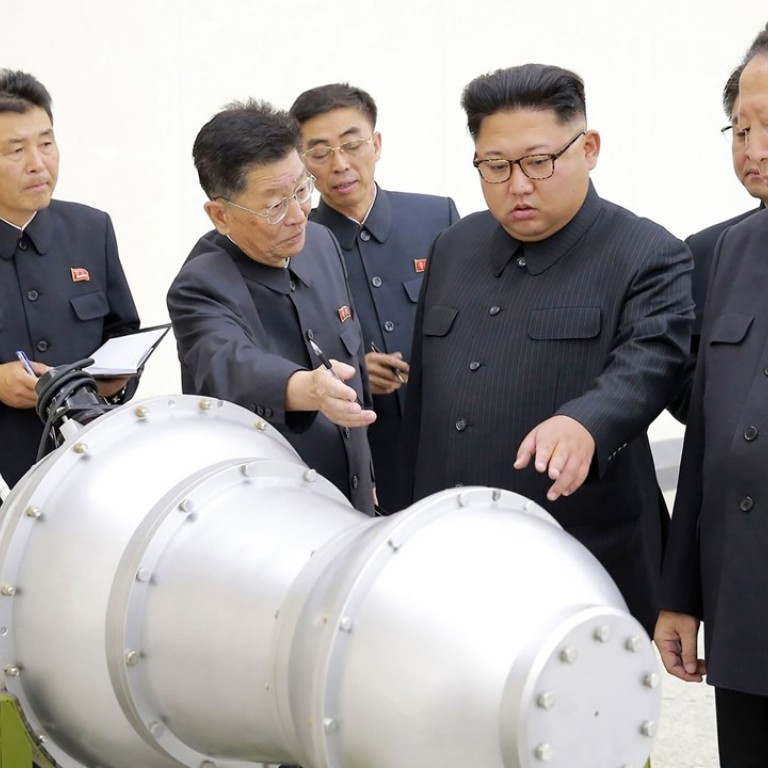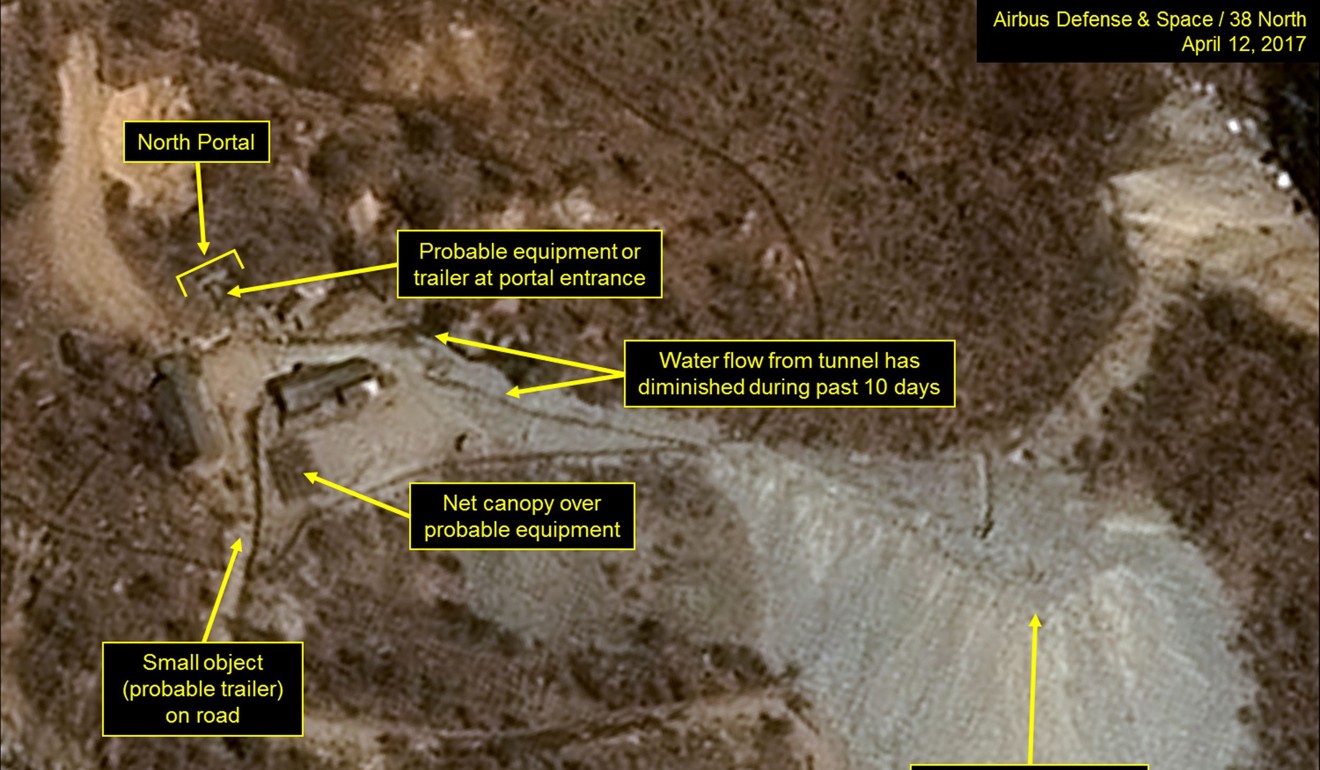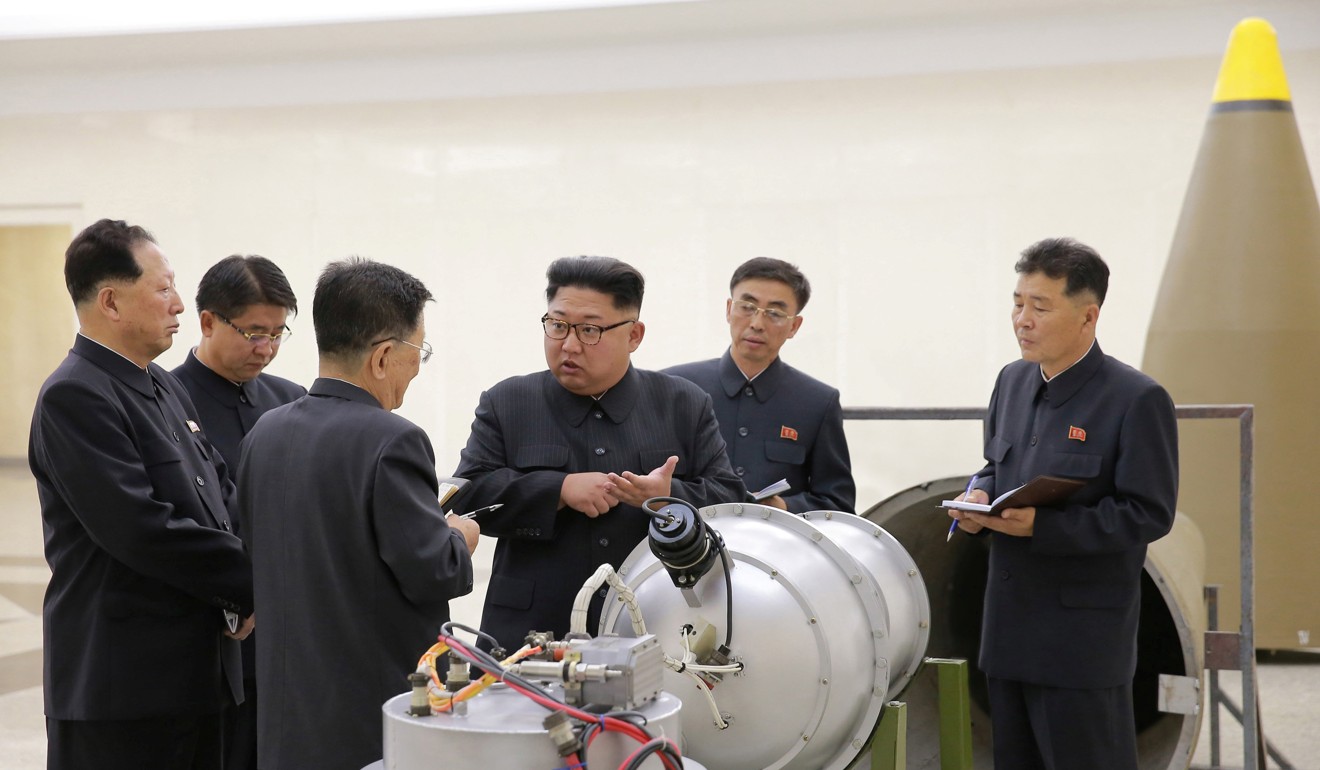
North Korea tests nuclear bomb it says can be made into warhead for long-range missile
China strongly condemns the test, while US President Donald Trump says ‘appeasement will not work’ with ‘rogue nation’
North Korea detonated a hydrogen bomb with “perfect success”, its state media said on Sunday, adding that the device was capable of being loaded onto its long-range missiles.
Hours after the North’s sixth nuclear detonation, an announcer on its official Korean Central Television declared: “The hydrogen bomb test was a perfect success.”
Earlier monitors measured a 6.3-magnitude tremor near its main testing site, which South Korean experts reportedly said was nearly 10 times more powerful than the 10-kiloton test carried out a year ago.
US President Donald Trump called North Korea’s actions “very hostile and dangerous” in a series of tweets.
“North Korea has conducted a major Nuclear Test,” Trump wrote. “Their words and actions continue to be very hostile and dangerous to the United States.”
Trump said the latest nuclear test was an embarrassment for China and proved that South Korea’s “talk of appeasement” was a waste of time.
South Korean President Moon Jae-in called for the “strongest punishment” against North Korea while China and Russia both strongly condemned the test.
North Korea “has ignored the international community’s widespread opposition, again carrying out a nuclear test. China’s government expresses resolute opposition and strong condemnation toward this”, the foreign ministry said in a statement on its website.
Xinhua reported that President Xi Jinping and Russian President Vladimir Putin agreed to “appropriately deal” with the North’s nuclear test.
Japan also condemned the test and Prime Minister Shinzo Abe spoke to Trump on the phone. The two leaders agreed on the need to put more pressure on Pyongyang.

BRICS countries are China, Russia, India, Brazil and South Africa.
Hydrogen bombs – also known as thermonuclear devices – are far more powerful than the relatively simple atomic weapons the North was believed to have tested so far.
Analysts’ initial estimates of the yield from Sunday’s test varied, ranging from 100 kilotons up to one megaton.
Either way, said Jeffrey Lewis of the armscontrolwonk website on Twitter, it was “a staged thermonuclear weapon” which represents a significant advance in its weapons programme.
Chinese monitors said they had detected a second quake soon afterwards of 4.6 magnitude that could be due to a “collapse (cave in)”, suggesting the rock over the underground blast had given way.
Pyongyang has long sought the means to deliver an atomic warhead to the United States, its sworn enemy. A new test would be certain to infuriate Washington, Tokyo, Seoul, Beijing and others.
Tokyo said the tremor was a nuclear blast, which Japanese Prime Minister Shinzo Abe had said would be “absolutely unacceptable.”

South Korean leader Moon called for “all diplomatic measures including UNSC sanctions resolutions to completely isolate North Korea”, presidential security adviser Chung Eui-Yong said after an emergency National Security Council meeting.
The South would discuss deploying “the strongest strategic assets of the US military”, he cited Moon as saying – potentially a reference to tactical nuclear weapons which were withdrawn by Washington in 1991.
Pyongyang triggered a new ramping up of tensions in July, when it carried out two successful tests of an ICBM, the Hwasong-14, which apparently brought much of the US mainland within range.
It has since threatened to send a salvo of rockets towards the US territory of Guam, and last week fired a missile over Japan and into the Pacific, the first time it has ever acknowledged doing so.
The move is a direct challenge to US President Donald Trump, who hours earlier had talked by phone with Abe about the “escalating” nuclear crisis in the region.
Trump has warned Pyongyang that it faces “fire and fury”, and that Washington’s weapons are “locked and loaded”.
Analysts believe Pyongyang has been developing its weapons to give it a stronger hand in any negotiations with the US.
“North Korea will continue with their nuclear weapons programme unless the US proposes talks,” Koo Kab-woo of Seoul’s University of North Korean Studies said.
He pointed to that Pakistan – whose nuclear programme is believed to have links with the North’s – conducted six nuclear tests in total, and may not have seen a need for any further blasts.
“If we look at it from Pakistan’s example, the North might be in the final stages” of becoming a nuclear state, he said.

Before the quake the official Korean Central News Agency said that leader Kim Jong-un had inspected a miniaturised hydrogen bomb that could be fitted onto an ICBM at the Nuclear Weapons Institute.
It was a “thermonuclear weapon with super explosive power made by our own efforts and technology”, KCNA cited Kim as saying, and “all components of the hydrogen bomb were 100 per cent domestically made”.
Pictures showed Kim in black suit examining a metal casing, with a shape akin to a peanut shell.
Actually mounting a warhead onto a missile would amount to a significant escalation on the North’s part, as it would create a risk that it was preparing an attack.
The North carried out its first nuclear test in 2006, and successive blasts are believed to have been aimed at refining designs and reliability as well as increasing yield.
Its fifth detonation, in September last year, caused a 5.3 magnitude quake and according to Seoul had a 10-kiloton yield – still less than the 15-kiloton US device which destroyed Hiroshima in 1945.
The North Korean leadership says a credible nuclear deterrent is critical to the nation’s survival, claiming it is under constant threat from an aggressive United States.
It has been subjected to seven rounds of United Nations Security Council sanctions over its nuclear and ballistic missile programmes, but always insists it will continue to pursue them.
Atomic bombs work on the principle of nuclear fission, where energy is released by splitting atoms of enriched uranium or plutonium encased in the warhead.
Hydrogen or H-bombs, also known as thermonuclear weapons, work on fusion and are far more powerful, with a nuclear blast taking place first to create the intense temperatures required.
In Sunday’s announcement before the earthquake, KCNA said the North’s hydrogen bomb had “explosive power that can be adjusted from tens to hundreds of kilotons depending on the target”.
No hydrogen bomb has ever been used in combat, but they make up most of the world’s nuclear arsenals.
Previous recent tremors in the region have been caused by nuclear tests.
The China Earthquake Networks Centre reported the measurement of the first seismic event was 6.3 magnitude with the depth of its epicentre at zero km. It noted that it might have been caused by explosion.

